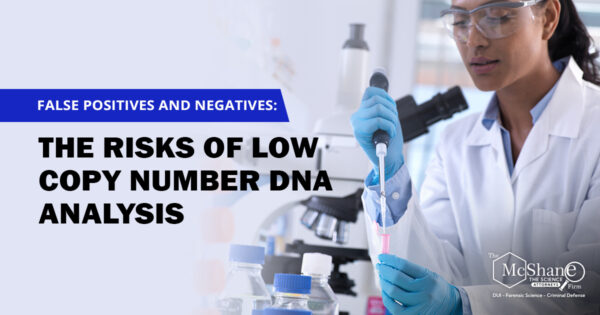Touch DNA and low copy number (LCN) DNA are two types of forensic DNA evidence that have become increasingly important in recent years. In this blog post, we will explore what touch DNA and LCN DNA are, and how they are used in criminal investigations. Touch DNA refers to DNA that is left behind when an individual touches an object or surface. When we touch things, we leave behind traces of DNA from our skin cells, which can be collected and analyzed. Touch DNA can be recovered from a variety of sources, including clothing, weapons, and other items that may have been handled by a suspect. The collection of touch DNA typically involves using sterile cotton swabs to collect DNA from the surface of an object. The DNA is then analyzed using PCR or other specialized techniques to amplify the DNA and create a DNA profile. Touch DNA can be a valuable tool in criminal investigations, as it can be used to link suspects to crime scenes or to identify potential accomplices.
Low copy number (LCN) DNA, on the other hand, refers to DNA samples that contain very small amounts of DNA. LCN DNA samples are typically obtained from touch DNA or other trace evidence, and may contain only a few cells worth of DNA. This makes them more difficult to analyze than other types of DNA samples. To analyze LCN DNA, forensic scientists use specialized techniques that are designed to amplify small amounts of DNA. This often involves using PCR, but may also involve other methods, such as whole genome amplification (WGA). The goal of LCN DNA analysis is to create a DNA profile that is reliable and accurate, despite the small amount of DNA available. LCN DNA analysis can be particularly useful in cases where other types of DNA evidence are not available or have been contaminated. However, it is also more prone to error and is subject to challenges in the courtroom, as the reliability of LCN DNA analysis can be called into question.
While touch DNA and low copy number (LCN) DNA are valuable tools in forensic science, they are not without limitations. These limitations can create challenges for forensic scientists and may impact the reliability and accuracy of the DNA evidence. One of the main limitations of touch DNA is the potential for contamination. When we touch objects or surfaces, we leave behind not only our own DNA but also DNA from other individuals who may have touched the same object. This can create difficulties in analyzing the DNA and linking it to a specific individual. For example, in the case of the Green River Killer, investigators initially collected DNA evidence from the victims’ bodies, but were unable to link the DNA to a specific individual due to the presence of multiple contributors.
Another limitation of touch DNA is the fact that it can be easily degraded or lost over time. DNA left behind through touch is often in small amounts and may be subject to degradation from environmental factors, such as exposure to sunlight, heat, or moisture. This can make it more difficult to extract and analyze the DNA, and may lead to inconclusive or unreliable results.
LCN DNA also has its limitations. One of the main challenges with LCN DNA is the potential for false positives or false negatives. The small amounts of DNA present in LCN samples can lead to errors in the analysis process, resulting in either the incorrect identification of an individual as a suspect, or the failure to identify a suspect who was actually present at the crime scene. For example, in the case of Joaquin Rams, a man was wrongfully convicted of a murder based on LCN DNA evidence that was later shown to be unreliable and insufficient to support his conviction.
Another limitation of LCN DNA is the potential for challenges in the courtroom. LCN DNA evidence is still a relatively new and emerging technology, and some defense attorneys have raised concerns about the reliability and accuracy of the evidence. These challenges have led to some cases where LCN DNA evidence has been excluded from the courtroom, or where it has been challenged by the defense.
In conclusion, while touch DNA and LCN DNA are valuable tools in forensic science, they have their limitations. These limitations can create challenges in the analysis and interpretation of DNA evidence, and may impact its reliability and accuracy. As technology continues to advance, it is likely that new techniques and approaches will be developed to mitigate these limitations and to ensure that DNA evidence is used effectively and accurately in criminal investigations and courtroom proceedings.


